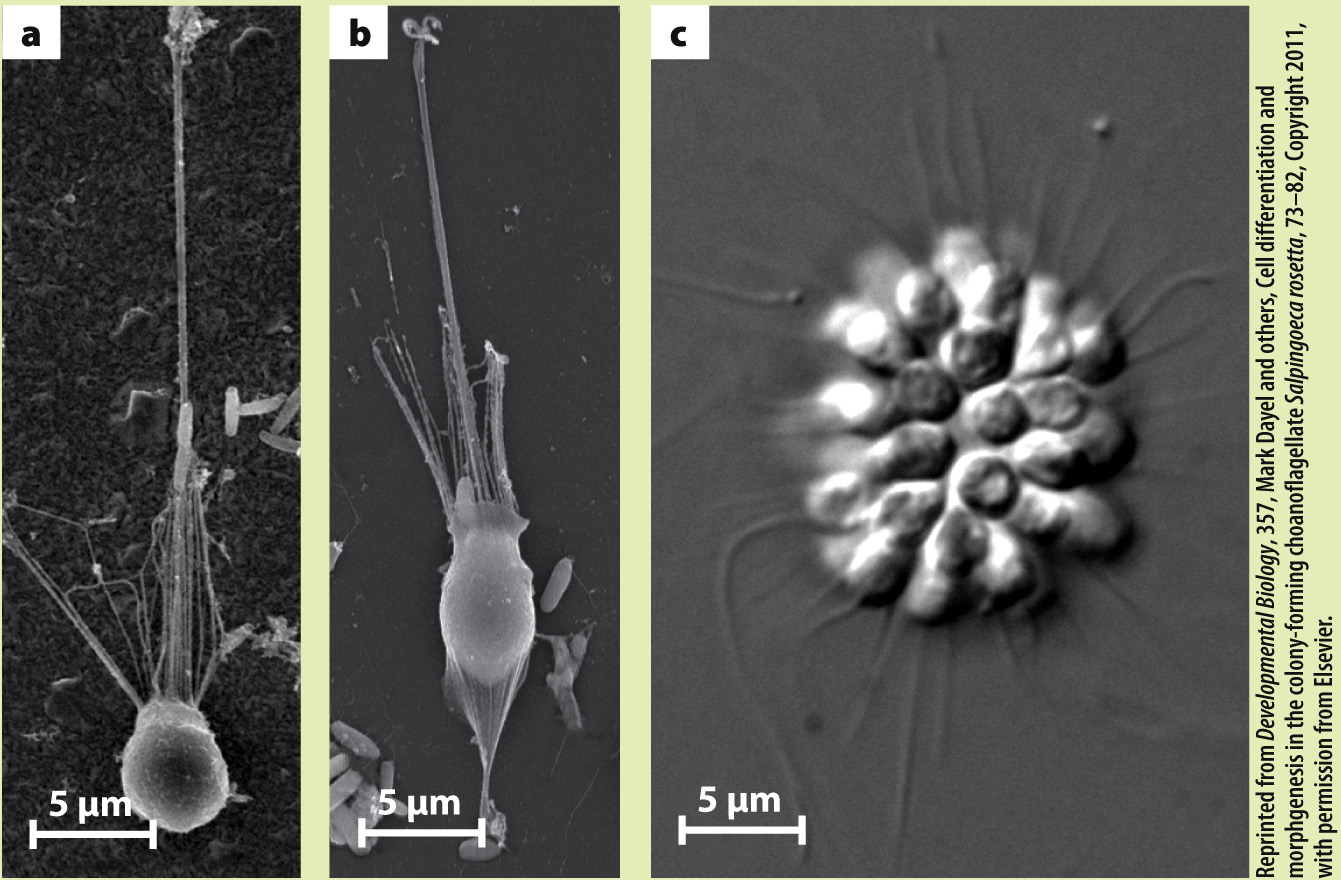HOW DO WE KNOW?
FIG. 28.7
How do bacteria influence the life cycles of choanoflagellates?
BACKGROUND Choanoflagellates are the closest protistan relatives of animals. Cell adhesion, cell differentiation, and multicellularity in these organisms are being studied to increase our understanding of early events in the evolution of animal multicellularity. Nicole King and her colleagues cultured the choanoflagellate species Salpingoeca rosetta in the laboratory. High-
HYPOTHESIS The bacterium Algoriphagus machipongonesis induces the choanoflagellate to form rosette-
EXPERIMENT The scientists grew the choanoflagellates in a medium containing only A. machipongonesis, as well as in media without this prey bacterium.

RESULTS The multicellular state formed only when A. machipongonesis was present (Fig. 28.7c).
CONCLUSION Choanoflagellates differentiate several cell types upon cues from the environment. In particular, molecular signals from prey bacteria can induce a simple form of multicellularity. The direct ancestors of animals may have gained simple multicellularity by a similar route.
FOLLOW-
SOURCE Dayel, M., et al. 2011. “Cell Differentiation and Morphogenesis in the Colony-